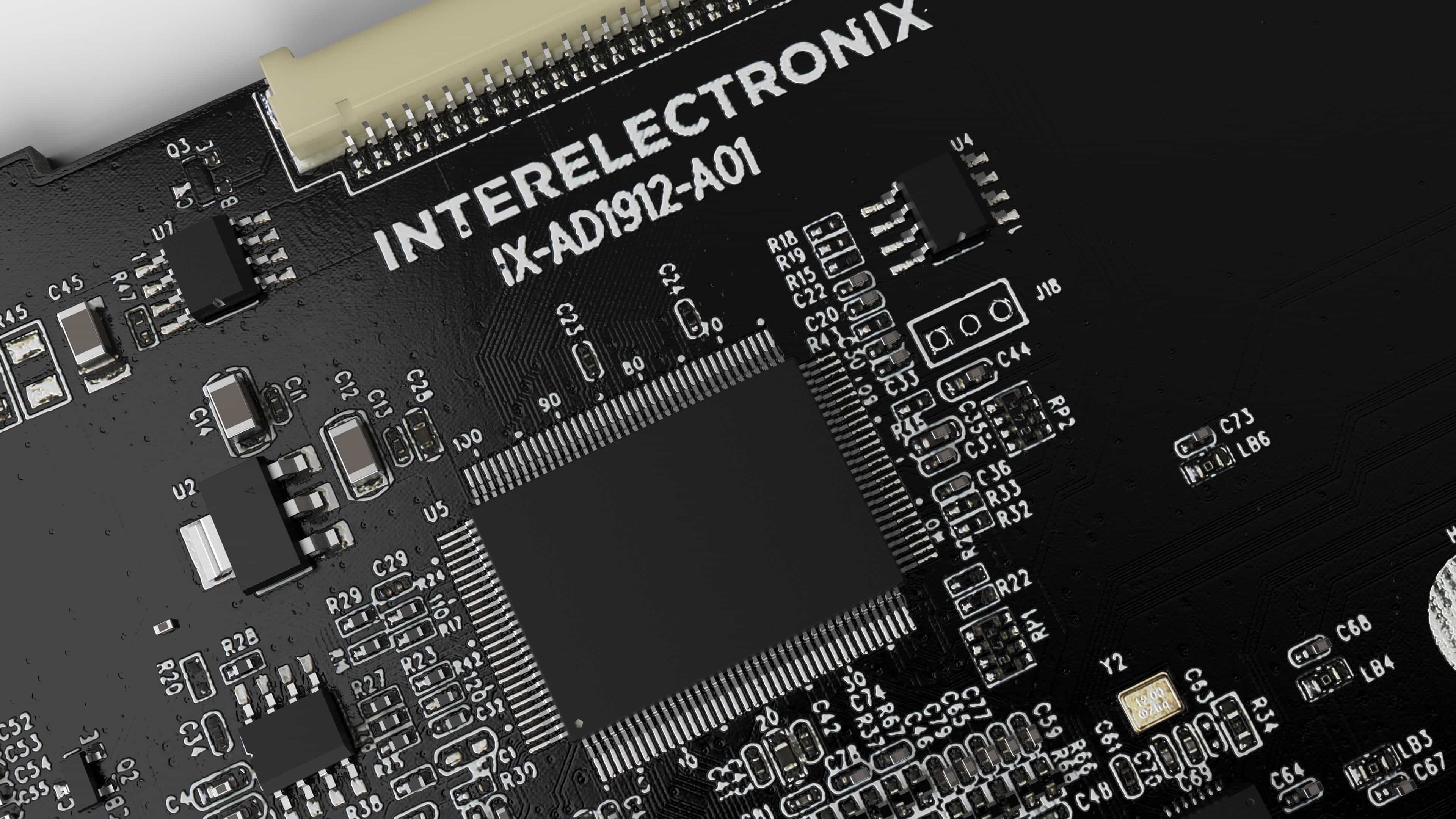Efficient development processes
Beyond Technical Specifications: The Comprehensive Nature of HMI System Development
Envisioning the development of a cutting-edge HMI system goes far beyond the mere technical implementation of a set of specifications. Especially for HMIs exposed to unique environmental conditions and requiring a blend of sophisticated technology and captivating design, a holistic approach is crucial. At Interelectronix, we recognize that creating an outstanding HMI system demands diverse skills and deep expertise. Our multidisciplinary teams, spanning system engineering, usability, and product design, work in concert to deliver high-quality, cost-effective solutions. This blog post will explore our comprehensive approach to HMI development, illustrating how we ensure functionality, design excellence, and user satisfaction from concept to certification.
The Intricacies of Developing HMI Systems
Developing HMI systems is more than following a set of technical specifications. Each project we undertake is unique, often exposed to special environmental conditions and requiring complex technical solutions. At Interelectronix, we understand that the real challenge lies in blending advanced technology with strong design and an intuitive operating concept. Our stable project teams, comprising experts from various fields, are the backbone of our development process. These teams ensure that every aspect, from system engineering to product approval, is meticulously managed and flawlessly executed.
The Importance of Diverse Skills and Expertise
Creating a high-quality HMI device with exceptional functionality demands a wide array of skills and expertise. At Interelectronix, our development process integrates the knowledge of engineers, designers, and usability experts to create products that stand out in the market. Each team member brings a unique perspective and specialized skill set, ensuring that all technical and aesthetic aspects are addressed. This collaborative approach allows us to develop HMIs that are not only technologically advanced but also user-friendly and visually appealing.
Cost-Oriented Product Development
While quality is paramount, cost-efficiency remains a critical consideration in product development. Our projects are framed by the principle of delivering high-quality HMI devices with outstanding functions within a cost-effective framework. By optimizing our processes and leveraging state-of-the-art tools, we ensure that our solutions are both innovative and economically viable. This balance of quality and cost is what makes our products competitive and attractive to clients.
Application-Oriented Approach from the Start
Right from the initial stages, our approach is deeply application-oriented. We involve all relevant disciplines early in the product development process, ensuring that usability is a core consideration from the outset. By integrating insights from system engineers, designers, and usability experts, we create a cohesive and well-rounded product development strategy. This early involvement ensures that all aspects of the product are aligned with the end-user’s needs and environmental conditions, leading to a more robust and user-friendly HMI system.
Comprehensive Requirement Analysis
Every successful project begins with a thorough analysis of all requirements and environmental influences. At Interelectronix, we start by understanding the specific conditions and demands at the intended place of use. This detailed analysis forms the foundation of our technology and material concept, ensuring that our solutions are tailored to meet the exact needs of our clients. By discussing these findings with the client, we create a transparent and collaborative environment that sets the stage for successful project execution.
Defining Functionalities for Optimal Operation
Following the initial requirement analysis, we focus on defining all necessary functionalities for the HMI system’s operation. This involves a detailed examination of the technology, environmental conditions, and specific operating requirements. By developing a comprehensive usability concept, we ensure that the interface is intuitive and easy to use. This step is crucial for creating an HMI system that not only meets technical specifications but also provides a seamless user experience.
Designing the Concept
Design is a critical component of HMI system development. Our design process involves creating a concept that integrates all technical, design, and shaping requirements. Using state-of-the-art CAD software, we develop virtual 3D models that provide a detailed visualization of the final product. These models are not only aesthetically pleasing but also meet all functional requirements. By focusing on design early in the process, we ensure that the final product is both beautiful and functional.
Virtual 3D Modeling and FE Analysis
To minimize the costs associated with multiple prototyping, we utilize advanced CAD software to create virtual 3D models. These models are then rigorously tested using the finite element (FE) method to ensure they meet all desired specifications. The FE method allows us to calculate the performance of selected materials, finishes, and physical properties, ensuring that the design is feasible and robust. This virtual modeling and analysis phase significantly reduces development time and costs, leading to a more efficient product development process.
Rapid Prototyping for Accurate Testing
Once the virtual models have been validated, we move on to rapid prototyping. Using modern techniques, we create prototypes that precisely match the planned HMI system in every detail and function. These prototypes allow us to conduct thorough testing and make any necessary adjustments before final production. By creating accurate prototypes, we ensure that the final product will perform as expected in real-world conditions, providing a reliable and high-quality HMI system.
Simultaneous Software Rapid Prototyping
The operability and usability of an HMI system depend heavily on the intuitiveness and simplicity of its interface design. To ensure that our operating concepts are effective, we engage in simultaneous software rapid prototyping. This allows us to program and test different interface designs in parallel with the hardware development. By integrating software and hardware prototyping, we create a cohesive and user-friendly HMI system that meets all functional and usability requirements.
Environmental Simulation Testing
For HMI systems exposed to unusual environmental conditions, it is essential to conduct environmental simulation tests. These tests are performed on the finished prototype to ensure that the system can withstand the specific conditions it will encounter in its intended environment. By simulating various environmental influences, we can identify and address potential issues before they become problems. This rigorous testing ensures that our HMI systems are durable, reliable, and capable of performing in even the most challenging conditions.
Certification and Compliance
Once the prototype has been thoroughly tested and approved, Interelectronix can assist with obtaining certification according to industry-specific standards. This step ensures that the HMI system meets all regulatory requirements and is ready for market release. Our expertise in navigating the certification process allows us to streamline this phase, reducing time to market and ensuring compliance with all necessary regulations. By handling certification, we provide our clients with peace of mind and a smooth path to product launch.
Passion and Creativity in Development
At Interelectronix, we believe that passion and creativity are at the heart of successful product development. Our multidisciplinary team of experts brings enthusiasm and innovation to every project, creating HMI systems that are technologically superior and aesthetically exceptional. By fostering a collaborative and creative environment, we ensure that our products are not only functional but also resonate with users on an emotional level. This commitment to excellence is what sets our HMI systems apart in the market.
Tailored Solutions for Future Applications
We develop individual touchscreen systems in close cooperation with our clients to ensure that they are optimally adapted to future application risks. This collaborative approach allows us to understand the unique challenges and requirements of each project, creating solutions that are tailored to meet specific needs. By working closely with our clients, we ensure that our HMI systems are not only innovative but also practical and future-proof. This dedication to tailored solutions is what makes our products reliable and effective in real-world applications.
Process Optimization for Efficiency
To keep development time and costs as low as possible, we have optimized our processes to be as efficient as possible. We work with a quality management system and continuously seek ways to improve our workflows. This commitment to process optimization ensures that we can deliver high-quality HMI systems within budget and on schedule. By focusing on efficiency, we provide our clients with cost-effective solutions that do not compromise on quality or performance.
Efficient Specification and Development
The first step in our development process is to specify the required properties with the customer and determine suitable, high-quality materials. Using modern CAD programs, we produce virtual 3D designs and simulate physical properties to speed up the development process. The finite element method allows us to reduce prototype production to a minimum, saving considerable time and money. Our PC-based development programs enable us to virtually specify touchscreens as far as possible and adapt them to the requirements. This efficient approach ensures that our development process is streamlined and effective.
Real Prototypes for Testing and Certification
Despite the advantages of virtual modeling, we also produce real prototypes that can be subjected to tests and individually certified at the customer's request. These physical prototypes allow us to conduct hands-on testing and make final adjustments before full-scale production. By creating and testing real prototypes, we ensure that our HMI systems meet all performance and usability requirements. This comprehensive testing phase provides the final assurance of quality and reliability before the product goes to market.
Why Interelectronix
At Interelectronix, we understand the complexities and demands of developing high-quality HMI systems. Our extensive experience and commitment to innovation enable us to deliver exceptional products that meet the unique needs of our clients. By combining technical expertise with creative design and a user-centric approach, we create HMI systems that are functional, reliable, and visually appealing. Contact us today to learn how we can help you navigate the intricate process of HMI development and achieve outstanding results with your products.


